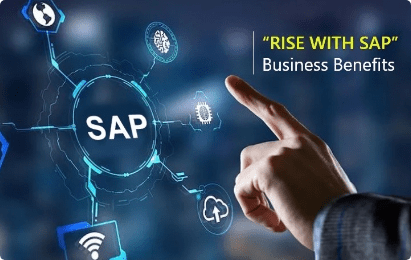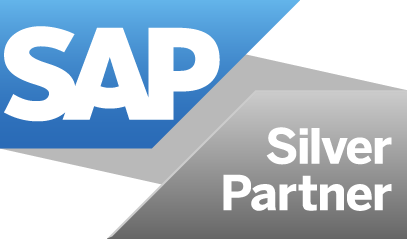
Blog
Orane’s blog posts keeping you up to speed with what’s hot in the world of business.
How to Plan your SAP S/4 HANA Migration Strategy?

Introduction:
What is HR Analytics?
A decade ago, terms like digital transformation, data analytics were not so common in boardroom discussions. Today, they have become the key points of discussion in every meeting. Customer needs are changing, and there is immense pressure on organizations to meet those changing expectations. Organizations have to adopt emerging technologies quickly and use agile methods to go faster-to-market.
Given the enormous data and business challenges they face every day, organizations can no longer rely on legacy systems like on-premises Enterprise Resource Planning (ERP) to manage their day-to-day activities. It is one of the key reasons why many organizations have started to migrate from systems like IBM DB2 and Sybase or upgrade their existing SAP environment and move to SAP S/4 HANA.
SAP S/4 HANA (High-Performance Analytic Appliance) is a next-generation ERP system with built-in intelligent systems such as AI, machine learning, and advanced analytics that can transform business processes and make them more intelligent and efficient.
With SAP announcing the end of SAP ERP and ECC6 by 2027, it’s time that organizations start planning their S/4 HANA migration strategy. This migration or upgrade is no longer an option; it’s a business need to thrive in the digital economy. And this migration has to be planned carefully to avoid wastage of resources, efforts, and money.
Let’s look at how organizations must go about this planning.
How to Plan the SAP S/4 HANA Migration Strategy?
Here are the key considerations in the migration plan-
Assess the current business and IT scenario
The decision to migrate to SAP S/4 HANA cannot be made by the business managers or IT managers in silos. It has to be a collaborative effort. This step holds the same irrespective of whether the organization intends to move from a non-SAP environment to an SAP environment or whether it chooses to upgrade to SAP S/4 HANA. Migrating to S/4 HANA would require the organization to assess the current business challenges and determine if migration could solve those issues. This would also include assessing if the migration would support their future developments too. Organizations also have to evaluate the current IT landscape and the current budget to see if it can support the migration. It is crucial to know because S4/HANA supports cloud capabilities and other emerging technologies, the organization’s IT systems should be prepared for it. Ensure that all the key stakeholders are involved in this discussion to ensure that no critical functions are impacted during the migration process.
Develop a business case
Migrating to S/4 HANA is a major decision, and understandably the management might have its own apprehensions about it. For example, most organizations find the licensing costs as a roadblock to migration. That’s why it’s important to develop a business case to show the short-term and long-term benefits of migrating. Highlight the benefits such as FTE savings, cost advantage, efforts, and create a case for change management. Try to address all the concerns of the management and show the qualitative and quantitative benefits to receive funding and sponsorship for migration.
SAP recommends a three-phase approach to create a strong business case. This includes:
- Identifying business value drivers and pain areas that need improvement
- Identifying the benefit areas where innovations can be done
- And compiling baseline assumptions and benchmarks to show benefits in numbers
Execute a Proof of Concept
Before migrating fully to S/4 HANA, execute a Proof of Concept (POC) to experience the new technology without even migrating to it. Typically, POC could be in the form of:
- A demo where the organization can experience how the new application works
- A test case conducted in the context of the existing business and IT to validate the business case
- A pilot to start the implement the migration in a phased manner
A POC will help the organization to understand if the new technology is really beneficial. It will enable the decision-makers to show the immediate outcome of implementation and strengthen their business case.
Define technology and architecture designs
Once key stakeholders approve the migration plan, it’s time to define technology and architecture designs. For example, in this phase, the organization has to decide if it wants to do a cloud or on-prem implementation, how data would be migrated, managed, and stored, security controls and risks, etc. Define clear technology and design principles and ensure that it is fully complied with during migration. When it comes to architecture designs, organizations must decide how the existing infrastructure will be rebuilt, how the technology will be deployed, how the integrations with other SAP and non-SAP systems will work, etc. Create detailed process documentation fleshing out sub-processes and activities to ensure that everything is considered during migration.
Choose between Greenfield, Brownfield, or Bluefield migration
There are essentially three types of migration approaches:
- Greenfield: It involves re-implementing the existing system in a new and empty system.
- Brownfield: Also called system conversion, it is the traditional upgrade where the existing system is converted.
- Bluefield: This is a hybrid approach where existing systems are copied, and the data is dropped to be used as a base for conversion.
Each of these approaches has its own pros and cons. For example, Greenfield’s benefit is that you can start afresh with a new system and introduce new themes and standardizations into the system. Brownfield, on the other hand, promises fewer disruptions in business continuity and shorter runtime. Hence, weigh the pros and cons thoroughly before migrating. It’s also important to consider the existing business scenario for migration. For example, an organization that plans to migrate from a non-SAP to S/4 HANA system would choose Greenfield migration, while the one that is considering an upgrade might choose Brownfield or Bluefield. So, analyze carefully and make a decision.
Plan business continuity and change management
Organizations that have been using non-SAP databases and systems may find the entire migration process overwhelming, as it involves not just change in technology, but would also require the staff to be trained in using the new technology and getting adapted to a new process of working. The best part about S4/HANA is that it allows integrations with non-SAP platforms too. Ensure that all the stakeholders, especially those handling mission-critical functions, are prepared for business continuity. This is also the time to communicate the changes to the employees, address their concerns, and ensure that all are trained to use the new processes.
The Road Ahead with SAP S/4 HANA
Subscribe to our communication
You agree to receive newsletters, marketing communication and latest developments from us.

6 Tips to Boost Your Business Performance
- August 19, 2022

How ERP Implementation is Essential for Businesses? – Top 5 Reasons
- August 19, 2022

Take your Data into next level
- August 19, 2022

Rise with SAP: Business Benefits
- August 19, 2022

SAP Masterdata Management
- August 19, 2022

